
october 9, 2004–JANUARY 2, 2005
Origins
Q. What are the origins of the paintings?
A. The paintings in this exhibition were probably made in Brussels or Bruges between 1482 and the early 1500s. They are strongly influenced by the work of the Netherlandish master Rogier van der Weyden, although he cannot have painted them himself, since he died in 1464. Instead, the paintings appear to have been modeled on several works by Rogier, which the artist or artists repeated in at least five different versions, each with different backgrounds and minor alterations in some of the details.
DresS
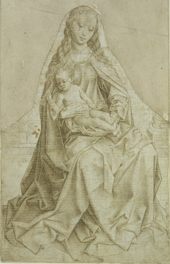
A drawing made by an artist working in Rogier's studio appears to be the model for the folds in the Virgin Mary's dress.
Virgin with the Blessing Child
c. 1440-50
School of Rogier van der Weyden
(Museum Boijmans Van Beuningen, Rotterdam)
christ Child
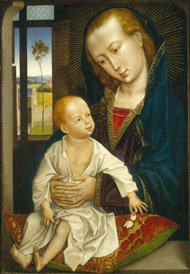
A painting by Rogier that no longer exists--the image shown here is a copy by an artist who must have seen the original--may be the source for the figure of the infant Christ.
Virgin and Child, c. 1470-75
Follower of Rogier van der Weyden
(The Saint Louis Art Museum.
Gift of Mr. & Mrs. Leicester B. Faust)
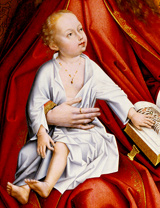
Williamstown
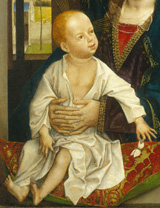
Saint Louis
Background
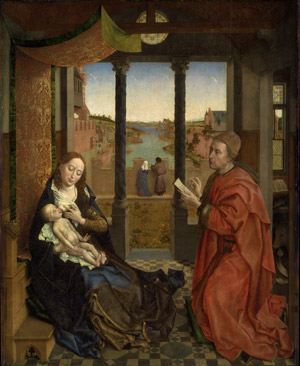
The background in the Williamstown painting is an exact-scale replica, with some modifications, of the background in Rogier's Saint Luke Drawing the Virgin, which hung in a chapel in Brussels in the fifteenth century.
Saint Luke Drawing the Virgin, c. 1435-40
by Rogier van der Weyden
(Museum of Fine Arts, Boston.
Gift of Mr. and Mrs. Henry Lee Higginson.
Photograph © Museum of Fine Arts, Boston)
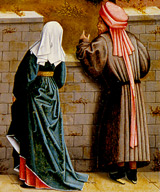
Williamstown
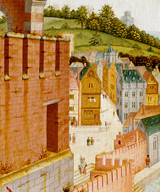
Williamstown
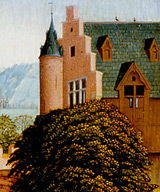
Williamstown
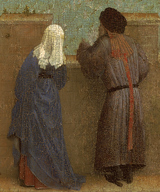
Boston
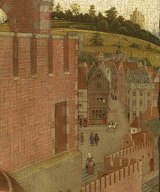
Boston
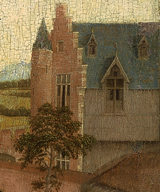
Boston
